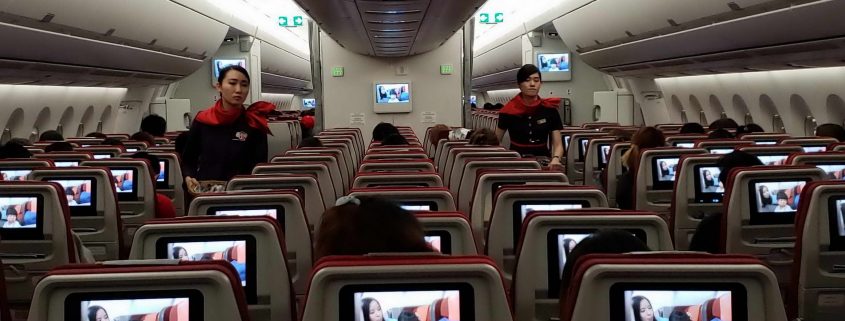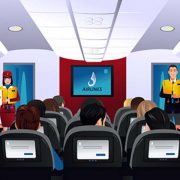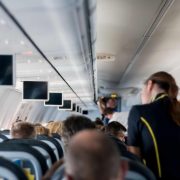Passenger safety briefing
The passenger safety briefing is provided for passengers to watch and listen as it contains important safety information. So, why don’t passengers pay attention anymore?
Passenger safety briefings are performed prior to each takeoff to provide all persons on board important safety information about the aircraft they are on. No matter how many times a person flies, they should always pay attention to the flight attendants in the cabin or the video screen as the passenger safety briefing is being performed. There are multiple reasons why passengers may choose not to give their attention to the safety briefing for 4 minutes, however, there are three other factors, in my opinion, that are close to the root cause of the change in passenger behavior.
1) Complacency
2) Portable electronic devices
3) Mentally disconnected
1) The commercial aviation industry has been operating at such a high level of safety for so long, few people ever question if their flight will push back, take off, fly, and arrive safely at their destination. It’s great that safety has reached such a high level, but it leaves room for passenger complacency. Passengers may think that since they are on newer, high tech planes, operated by well-trained pilots, with a flight safety record in the United States that’s second to none, everyone will walk off the plane at their destination. While this state of operation is highly desirable, when something goes wrong, passengers aren’t as well prepared for the emergency as they could or should be. Think of the videos showing passengers evacuating a burning plane with their carry-on baggage, or experiencing a decompression and some people didn’t know how to properly wear their mask. Giving a few minutes of their time would have shown them how to wear the oxygen mask during a decompression.
2) Prior to portable electronic devices, all passengers had in their bags were some clothes, snacks for the flight, some reading material, and maybe a Walkman with a few cassettes or CDs. There was little monetary value in the carry-on bag. Now, any bag may contain 500.00 to thousands of dollars’ worth of electronics, phones, tablets, laptops, MacBook computers, expensive headphones, data storage devices with high value software and intellectual property or personal photos and documents of high value to them. Everyone’s personal or work life is in their bag, and in their mind, they can’t afford to lose it. The value and importance of that carry-on bag is now very, very high. People will leave behind clothes, food, and reading material, just not their portable electronic devices. This creates a potentially hazardous condition during aircraft evacuations as no one is willing to just get out of the plane. Their valuables mean too much to them and everything must go evacuate at the same time. This is a negative mindset that has high potential to contribute to passenger fatalities during an evacuation.
3) Most passengers are 100% tuned out from the moment they board the plane. Headphones on, music jamming, check out YouTube, Twitter, Facebook, TikTok, or any other social media. Few passengers are willing to lift their heads to watch the passenger safety briefing, whether in video format or any briefing for that matter. The only exception to this is likely Southwest Airlines because you never know what you’re going to hear from them. Passengers pay attention for their humorous, off the cuff safety demo occasionally given. I’m not saying that’s a great thing to go off the cuff, but it works for Southwest Airlines.
Back in the 1990s, some to many airlines made all passengers remove their headsets until after takeoff. That was company safety policy, not driven by regulation. Smartphones changed all that. Allowing passengers to wear headphones/earbuds was the opening to not paying attention to the crew or safety briefing.
I do believe these three points are contributing factors to why passengers do not pay attention to the passenger safety briefing. When it comes to evacuating an aircraft, it’s probable that the value of PEDs caused the change in passenger behavior regarding “come this way, leave everything behind!” Leaving everything behind and just get out of the aircraft is no longer going to happen due to the high value of items now contained in carry-on baggage. For those that have been flying since the 1990s, we all know that this problem didn’t really exist pre-2000. Once the smartphone and laptops became widely popular, the change in passenger’s willingness to leave their belongings behind was changed and it was not for the better.










Leave a Reply
Want to join the discussion?Feel free to contribute!